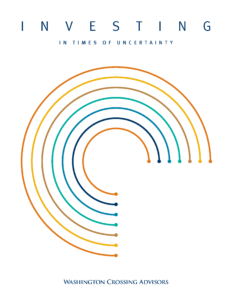Insight & Commentaries
The spread of coronavirus outside China hit markets hard last week. Stocks fell on reports of new infections and deaths in Italy and elsewhere. The sharp drop in stock prices, coupled with a plunge in Treasury bond yields, leaves the S&P 500 dividend yield now higher than the 30 year U.S. Treasury yield (first chart, below). Domestic stocks suffered more significant declines than foreign due to concern the virus could spread in the United States (second chart, below). The chart shows pronounced weakness in the S&P 500 (a measure of domestic stock performance) versus the MSCI EAFE index (a measure…
Global business activity is taking an unexpected hit from worries over the coronavirus outbreak, according to recent data from IHS Markit. As the chart below shows, the IHS Markit purchasing managers’ index fell sharply through mid-February with U.S. Services Business Activity Index falling to 49.4 (53.4 in January), a 76-month low. The IHS Manufacturing Survey (below) also fell to 50.8 (51.9 in January), a 6-month low. New orders fell for the first time since data collection began in 2009. Hesitancy among firms due to coronavirus is causing a decline in business activity in the United States. This is the conclusion…
The outbreak, centered within China’s industrial heartland, is upending life and closing business across many parts of China. According to a report from CNBC, 20 Chinese provinces covering 80% of Chinese GDP, and 90% of exports are under some form of lockdown. Further complicating the situation is the timing of the Chinese New Year festival from January 25 through February 8. Because many businesses usually close during the festival, several years ago, China’s National Bureau of Statistics decided to combine January and February data reports into a single month and release the information in mid-March. In other words, much of…
Many factors conspire to cause stock values to rise and fall, but one stands above all others — profits. Successful business investment is the beginning of profit growth and rising stock values. Such activities enlarge earnings power and drive the value of an enterprise over time. But last year’s 30% rise in stock values1 was not accompanied by a rising tide of earnings and capital investment. Instead, the rise was mostly driven by investors’ willingness to pay higher prices for the same level of earnings. In our view, stock values will continue to rise only as a result of continued…
The average American household’s net worth soared to $885,000 last year, 65% higher than a decade ago, according to data from the Federal Reserve and Census Bureau1. Much of the gain came from financial markets where both stocks and bonds surged. Conditions seem supportive for further gains, but valuations are looking full. Even though fundamentals look good, returns in the future should be lower because stock and bond yields sit at historic lows and because markets are already expecting good news. Rise of Liquidity Other than a small decline last week on coronavirus concerns, stocks have been quiet. When central…
Worries over rising rates and trade faded in 2019, prompting sizable gains in both bonds and stocks. Global growth seems to be firming and the United States is exhibiting stronger growth than most other developed nations as we start 2020. Low interest rates, rising wages, and record wealth is driving growth, but above average valuations reduce return expectations. This report covers Washington Crossing Advisors’ long-run views as we head into 2020. These top-down views are central to our tactical asset allocation decisions and recommendations.
The past few months, our WCA Fundamental Conditions Barometer (Table A) has bounced around sideways with no real direction. This sideways behavior comes after a monetary policy induced spring surge. With markets now in sync with central bank messaging, there is little new impetus to drive risk appetite. Ahead lies the prospect that a partial trade deal with China could bolster confidence, reenergize growth, and boost corporate earnings. Missing Link The missing link in the argument for a furthering of the current bull market is in the earnings story. Growth is critically important for any long-run bullish argument for stocks….
The current equity market bull run is the longest on record, but it is just one chapter in a bigger story. This week we look back at the current run in the context of 50 years of strong returns. What Drives Return? Return comes from one of three sources: current yield, growth of income, or changes in valuation. There is no other way to create a return. Take, for example, the S&P Composite index, which traded at $94 in September 1969, some fifty years ago. The index’s dividend was $3.15, implying a then-current dividend yield of 3.3% ($3.15 / $94)….
The Dow Jones Industrial Average and the S&P 500 are up 15% and 20%, respectively, for the year, driving the value of U.S. stocks to a record of $32 trillion. United States’ household’s net worth is $113 trillion, far eclipsing the past peak of $71 trillion back in 2007 at the height of the housing bubble. Better domestic growth than elsewhere around the world, flush corporate profits, and accommodating capital markets are all positives for U.S. investors. These conditions have gone a long-way to lift asset values to today’s levels. Diving Rates — Blessing or Curse? The rise in asset…



